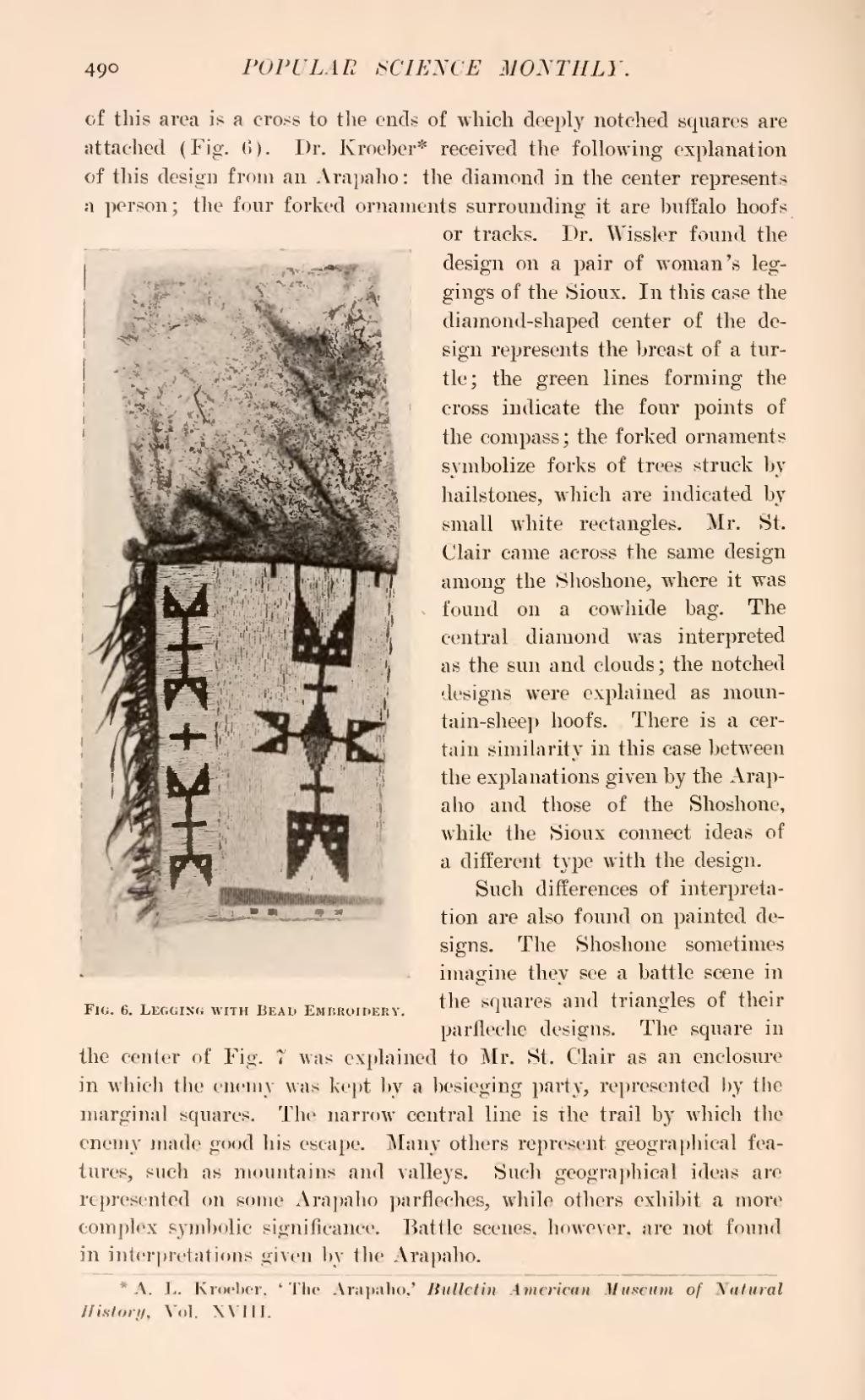of this area is a cross to the ends of which deeply notched squares are attached (Fig. G). Dr. Kroeber[1] received the following explanation of this design from an Arapaho: the diamond in the center represents a person; the four forked ornaments surrounding it are buffalo hoofs
or tracks. Dr. Wissler found the design on a pair of woman's leggings of the Sioux. In this case the diamond-shaped center of the design represents the breast of a turtle; the green lines forming the cross indicate the four points of the compass; the forked ornaments symbolize forks of trees struck by hailstones, which are indicated by small white rectangles. Mr. St. Clair came across the same design among the Shoshone, where it was found on a cowhide bag. The central diamond was interpreted as the sun and clouds; the notched designs were explained as mountain-sheep hoofs. There is a certain similarity in this case between the explanations given by the Arapaho and those of the Shoshone, while the Sioux connect ideas of a different type with the design.
Such differences of interpretation are also found on painted designs. The Shoshone sometimes imagine they see a battle scene in the squares and triangles of their parfleche designs. The square in the center of Fig. 7 was explained to Mr. St. Clair as an enclosure in which the enemy was kept by a besieging party, represented by the marginal squares. The narrow central line is the trail by which the enemy made good his escape. Many others represent geographical features, such as mountains and valleys. Such geographical ideas are represented on some Arapaho parfleches, while others exhibit a more complex symbolic significance. Battle scenes, however, are not found in interpretations given by the Arapaho.
- ↑ A. L. Kroeber, 'The Arapaho,' Bulletin American Museum of Natural History. Vol. XVIII.

